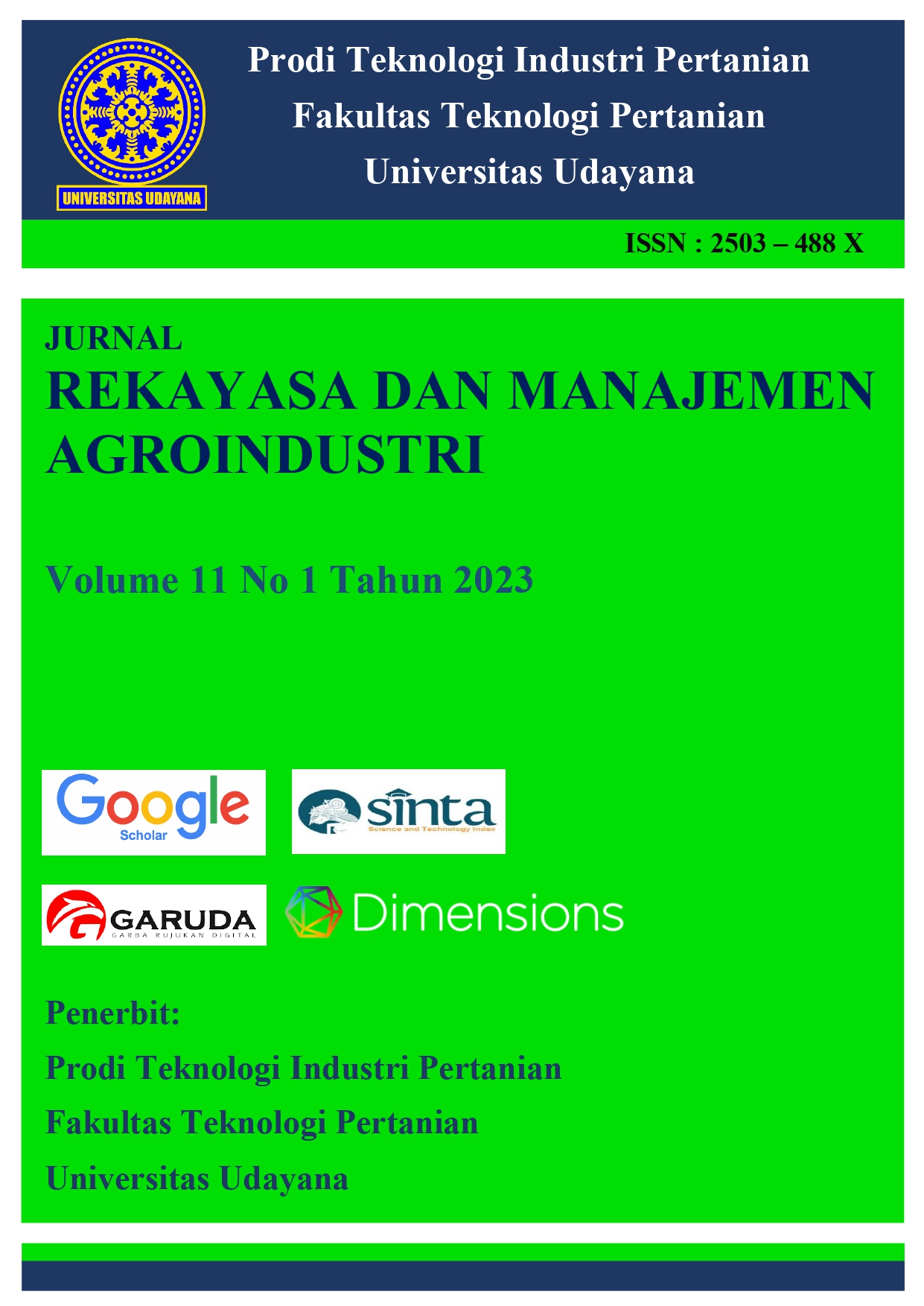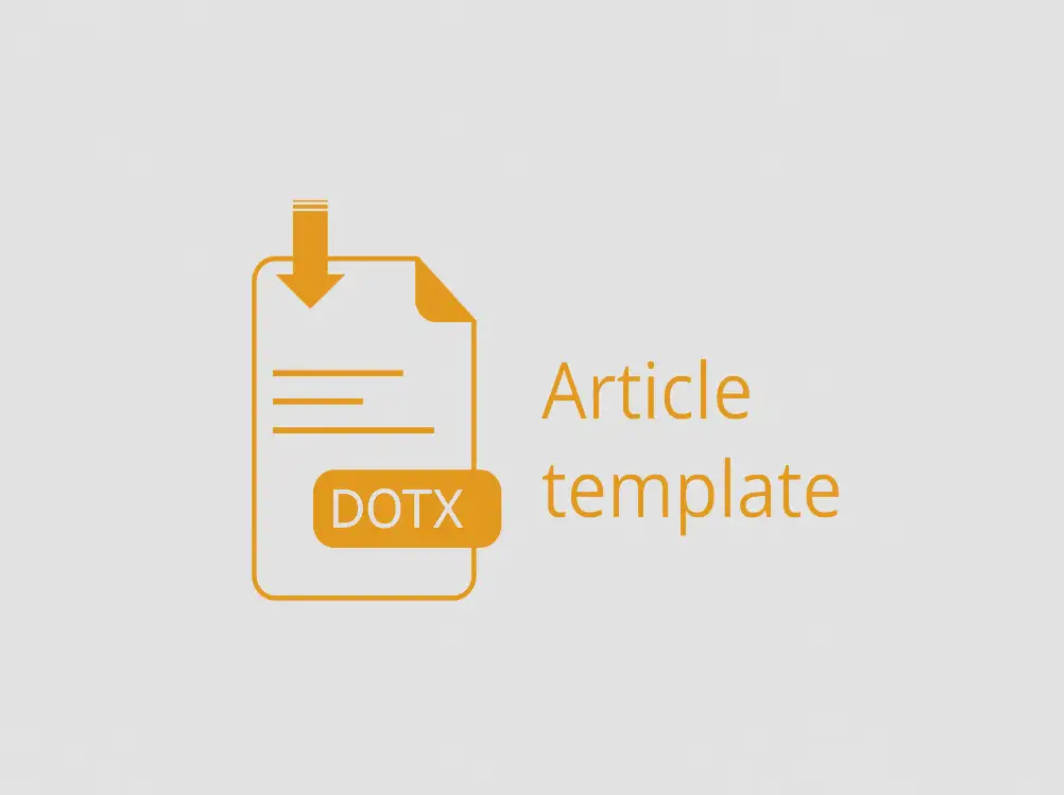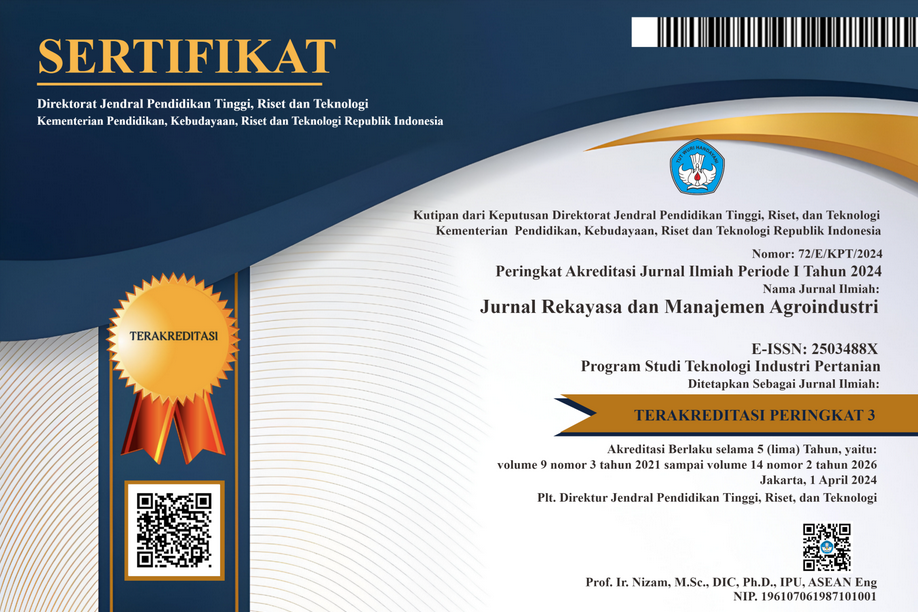Aktivitas Antioksidan Ekstrak Kulit Buah Kakao (Theobroma cacao L.) Pada Perlakuan Suhu dan Lama Penyimpanan
Abstract
This research was conducted to determine effect of temperature and storage time on antioxidant activity of cocoa pod husk extract (Theobroma cacao L.) and to obtain the best combination of storage temperature and storage time that can maintain the antioxidant activity of the extract. The experimental design used in this research was a factorial randomized block design, which are grouped into 2 groups based on the implementation time and consisted of two factors. The first factor was the storage temperature which consisted of 3 level that namely room temperature (27 ±2)?, cold temperature (5 ±2)? and freezing temperature (-10 ±2)?. The second factor was the storage time which consisted of 4 level namely 1, 2, 3, and 4 weeks. The data were analyzed by analysis of variance and continued with Tukey test. The results showed that the temperature and storage time had a very significant effect on total phenol, total flavonoid and antioxidant capacity of cocoa pod husk extract. Interactions between treatments had a very significant effect on total phenol, total flavonoid and antioxidant capacity of cocoa pod husk extract. The best treatment showed that freezing storage (-10 ±2)? for 1 week can maintain total phenol was 12.32 ± 0.08 mg GAE/g extract, total flavonoid was 4.07 ± 0.09 mg QE/g extract, antioxidant capacity was 6.50 ± 0.02 mg GAEAC/g extract.
Downloads
References
Badan Pusat Statistik. 2021. Statistik Kakao Indonesia 2020. Badan Pusat Statistik Indonesia, Jakarta.
Blois, M. S. 1958. Antioxidant determinations by the use of a stable free radical. Nature .181(4617):1199– 1200.
Chang, C., M. Yang, H. Wen, and J. Chern. 2002. Estimation of total flavonoid content in propolis by two complementary color-imetric methods. Journal Food Drug Anal. 10(3):178-182.
Chusniasih D. dan Tutik. 2020. Aktivitas antikanker ekstrak aseton kulit buah kakao (Theobroma cacao L.) terhadap sel vero dan MCF-7 secara in vitro. Jurnal Analis Kesehatan. 9(2):35-40.
De Garmo, E. P., W. G. Sullivan, and C. R. Canada. 1984. Engineering Economy. Macmillan Publisher, New York.
Figueira A., J. Janick, and J. N. BeMiller. 1993. New Products From Theobroma Cacao: Seed Pulp and Pod Gum. In New Crops, New York.
ICCO. 2022. Quarterly Bulletin of Cocoa Statistics. The International Cocoa Organization, United Kingdom.
Kemit, N., I. W. R. Widarta, K. A. Nocianitri. 2015. Pengaruh jenis pelarut dan waktu maserasi terhadap kandungan senyawa flavonoid dan aktivitas antioksidan ekstrak daun alpukat (Persea Americana Mill). Jurnal Ilmu dan Teknologi Pangan. 5(2):130-141.
Khotimah H., R. Agustina, dan M. Ardana. 2018. Pengaruh lama penyimpanan terhadap aktivitas antioksidan ekstrak daun miana (Coleus atropurpureus L. Benth). Mulawarman Pharmaceutical Conference. 8(1):1-7.
Koirewoa, Y. A., Fatimawali, dan Weny I. W. 2012. Isolasi dan identifikasi senyawa flavonoid dalam daun beluntas (Pluchea indi-ca L.). Pharmacon: Jurnal Farmasi Indonesia. 1(1):47-52.
Maulida, Rany. 2007. Aktivitas antioksidan rumput laut caulerpa lentillifera. Skripsi S-1. Tidak Dipublikasikan. IPB University Sci-entific Repository, Bogor.
Monica, A., Madrau, A. Piscopo, A. M. Sanguetti, A. D. Caro, M. Poina, F. V. Romeo, and A. Piga. 2009. Effect of drying tem-perature on polyphenolic content and antioxidant activity of apricots. Europe Food Reseacrh Technology. 228(3):441–448.
Pratyaksa I. P. L., G. P. Ganda Putra, dan L. Suhendra. Karakteristik ekstrak kulit buah kakao (Theobroma cacao L.) sebagai sum-ber antioksidan pada perlakuan ukuran partikel dan waktu maserasi. Jurnal Rekayasa dan Manajemen Agroindustri. 8(1):139-149.
Sakanaka, S., Y. Tachibana, and Y. Okada. 2003. Preparation andantioxiant properties of extracts of japanese persimo leaf tea (kakinocha-cha). Food Chemistry. 89(4):569-575.
Sartini, M. N. Djide, dan N. Duma. 2012. Pemanfaatan limbah kulit buah kakao sebagai sumber bahan aktif untuk sediaan farma-si. Jurnal Industri Hasil Perkebunan. 7(2): 69-73.
Ulfa A. M., D. Chusniasih, dan A. D. Bestari. 2019. Pemanfaatan potensi antioksidan dari limbah kulit buah kakao (Theobroma cacao L.) dalam sediaan masker gel. Jurnal Farmasi Malahayati. 2(1):33-40.
Wati, E. W., N. Mita, dan M. Ardana. 2018. Pengaruh suhu dan lama penyimpanan terhadap stabilitas warna sari buah naga merah (Hylocereus polyrhizus Brriton and Rose). Mulawarman Pharmaceutical Conference. 8(1):1-7.
Wulansari I. D., B. A. Harsujuwono, dan S. Mulyani. 2020. Pengaruh suhu penyimpanan terhadap kerusakan antioksidan ekstrak daun asam (Tamarindus indica L.). Jurnal Rekayasa dan Manajemen Agroindustri. 8(4):544-550.

Ciptaan disebarluaskan di bawah Lisensi Creative Commons Atribusi-BerbagiSerupa 4.0 Internasional.
Seluruh artikel di Jurnal ini dapat disebarluaskan atas tetap mencantumkan sumber yang syah. Identitas judul artikel tidak boleh dihilangkan. Penerbit tidak bertangggung jawab terhadap naskah yang dipublikasikan. Isi artikel menjadi tanggung jawab Penulis.














